We've found 788 matches for your search. Order by
Results
-
£7.50
120 Hymns for Brass Band (2nd Trombone) - Steadman-Allan
Download the PDF for a sample of the part and the index of hymns.
In Stock: Estimated dispatch 1-3 working days
-
£7.50
120 Hymns for Brass Band (Bass Trombone) - Steadman-Allan
Download the PDF for a sample of the part and the index of hymns.
In Stock: Estimated dispatch 1-3 working days
-
£9.00
120 Hymns for Brass Band A4Format (1st Trombone) - Steadman-Allan
Download the PDF for a sample of the part and the index of hymns.
In Stock: Estimated dispatch 1-3 working days
-
£9.00
120 Hymns for Brass Band A4Format (2nd Trombone) - Steadman-Allan
Download the PDF for a sample of the part and the index of hymns.
In Stock: Estimated dispatch 1-3 working days
-
£9.00
120 Hymns for Brass Band A4Format (Bass Trombone) - Steadman-Allan
Download the PDF for a sample of the part and the index of hymns.
In Stock: Estimated dispatch 1-3 working days
-
£7.50
120 Hymns for Fanfare Band (1st Trombone B bass clef) - Steadman-Allan
Download the PDF for a sample of the part and the index of hymns.
In Stock: Estimated dispatch 1-3 working days
-
£7.50
120 Hymns for Fanfare Band (2nd Trombone B bass clef) - Steadman-Allan
Download the PDF for a sample of the part and the index of hymns.
In Stock: Estimated dispatch 1-3 working days
-
 £24.95
£24.95Berceuse de Jocelyn (Angels Guard Thee) (Trombone Solo with Brass Band - Score and Parts)
Estimated dispatch 7-14 working days
-
 £44.95
£44.95Bone Idyll (Trombone Solo with Brass Band - Score and Parts)
Estimated dispatch 7-14 working days
-
 £24.95
£24.95Concert Variations (Trombone Solo with Brass Band - Score and Parts)
Estimated dispatch 7-14 working days
